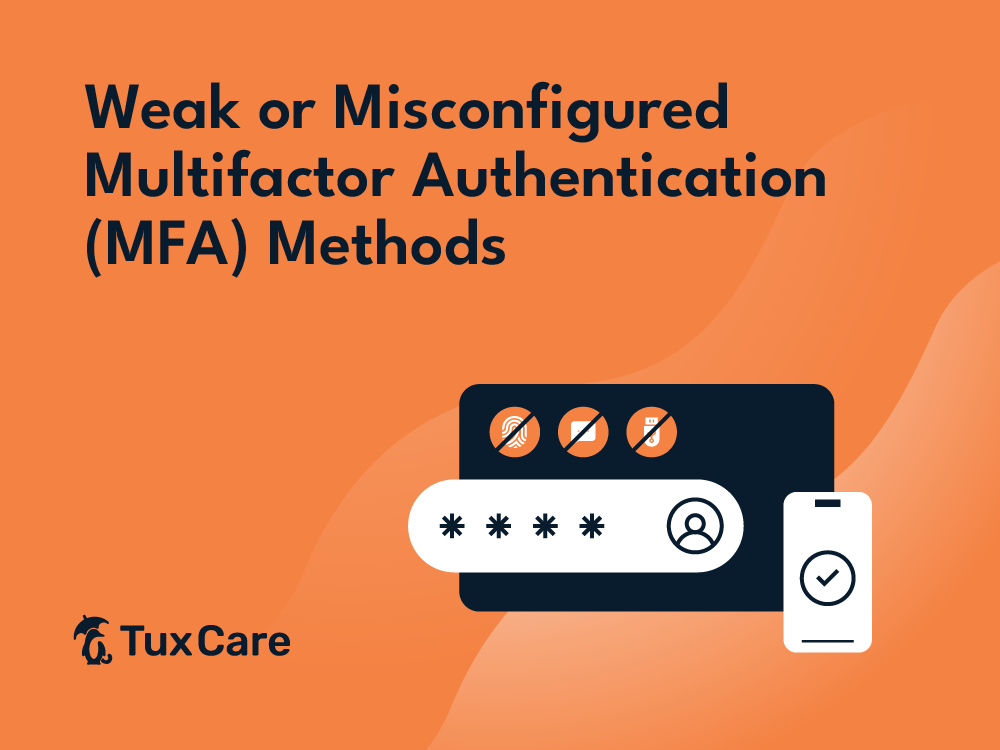Weak or Misconfigured Multi-Factor Authentication (MFA) Methods
This article is part of a series where we look at a recent NSA/CISA Joint Cybersecurity Advisory on the top cybersecurity issues identified during red/blue team exercises operated by these organizations. In this article, you will find a more in-depth look at the specific issue, with real-world scenarios where it is applicable, as well as mitigation strategies that can be adopted to limit or overcome it. This expands on the information provided by the NSA/CISA report.
The implementation of robust multi-factor authentication (MFA) methods is a pivotal line of defense in cybersecurity. Yet, advisories from the National Security Agency (NSA) and Cybersecurity and Infrastructure Security Agency (CISA) highlight that weak or misconfigured MFA methods remain a prevalent vulnerability. This article explores MFA’s criticality, common misconfigurations, and best practices to ensure its effectiveness.
Why MFA Is Important
Multi-factor Authentication significantly enhances security by requiring multiple verification forms, crucial in an era of sophisticated cyber threats. Password-only authentication has proven inadequate, with services like “Have I Been Pwned” revealing massive data breaches, often including passwords.
MFA introduces an additional layer, combining “something you know” (a password) with “something you have” (like a phone or physical token), fortifying defense against unauthorized access.
Common Pitfalls and Misconfigurations
- Over-Reliance on Basic Methods: SMS or email-based verifications are vulnerable to interception. Exploring more secure alternatives, like app-based tokens or biometrics, is advisable.
- Incomplete Coverage: Neglecting MFA for any account, especially administrative ones, leaves glaring security gaps.
- Similar Factor Vulnerabilities: Using two factors stored in the same location (like a password and a locally stored digital certificate) doesn’t constitute true MFA, as both can be compromised simultaneously.
- Replicable Factors: Factors like RFID or NFC tags, susceptible to duplication, offer weaker security. Using them in combination with more secure factors is recommended.
- Inadequate User Education: Educating users on potential attack vectors and their mitigation is vital for maintaining MFA’s integrity.
Real-World Implications: The Microsoft “Midnight Blizzard” Incident
A prime example of MFA’s importance is the “Midnight Blizzard” attack on Microsoft. Detailed in Microsoft’s Security Response Center blog and reported widely, the incident involved unauthorized access to board members’ email accounts, facilitated by a lack of MFA.
This breach highlights the need for robust MFA to protect sensitive information and systems. It also exposes the “chink in the armor” problem with cybersecurity, as any gap – however small – can lead to successful breaches and exploits.
Best Practices for Robust MFA Implementation
- Diverse Authentication Factors: Employ a mix of passwords, security tokens, and biometric verifications to fortify defenses.
- Comprehensive Coverage: MFA must be mandatory across all accounts and systems where authentication is required. When starting to deploy MFA, focus particularly on administrative access, but plan to expand coverage rather than stopping there.
- Regular Audits and Updates: Continuously monitor and update MFA configurations to address emerging threats and technological advancements. New methods to attack independent factors emerge regularly, so be prepared to switch away quickly from factors rendered insecure. Avoid considering one factor more important than others.
- User Training and Awareness: Regular education on MFA’s importance and secure usage is essential. Emphasize that security should take precedence over convenience and obviate why it’s an existential requirement that it happens.
- No Exceptions Policy: Any account or system without MFA can be a potential entry point for attackers. Ensure universal MFA implementation.
- Third-Party Integrations: Make MFA support a non-negotiable requirement in the procurement process for software and hardware.
Emerging Technologies in MFA
Looking ahead, emerging technologies in MFA, such as advanced biometrics and behavioral analytics, promise to further enhance security measures. Keeping abreast of these developments is crucial in adapting to evolving cyber threats.
Final Thoughts
Robust and well-configured MFA is a technical necessity and a cornerstone of mature cybersecurity strategies. Organizations must ensure that their MFA methods are comprehensive, robust, and tailored to their specific threat landscape and operational needs.



 Documentation
Documentation Login
Login




